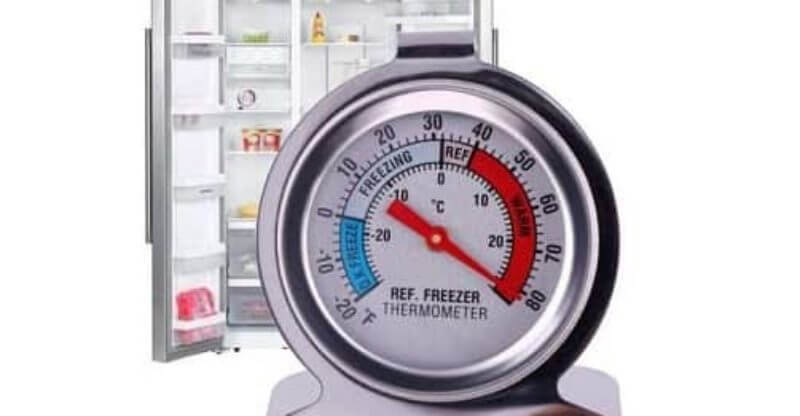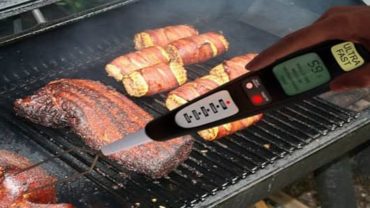Different Types of Kitchen Thermometers and Their Uses
One of the essential factor to consider while cooking in the kitchen is ensuring the food prepared is safe for consumption. While cooking meat extra precaution needs to be taken. For safety, food must be stored at a proper cold temperature in the refrigerator, and it must be cooked thoroughly before consumption. Bacteria and other microorganism are killed at high temperature.
Why do kitchens use a thermometer?
Table of Contents
Commonly meat thermometers are used to check whether the meat or poultry is done or to see if the sugar has reached the right temperature for making candies or there any liquid has reached the desired temperature to proceed further. Accuracy is key in baking or preparation of dessert, the quantity of ingredients used and the temperature to which it is cooked determines the taste and texture of your dessert. The thermometer can also be used as an extra tool to check the temperature of the oven or microwave before baking or cooking in it. Further checking the temperature of the food ensure that it is safe for consumption. For meats, we should know how to use a meat thermometer to ensure the meat temperature is fit for consumption.
Thermometer and Cooking.
Thermometer and cooking are interlinked while cooking meat and poultry. Most of us decide whether food is prepared or not based on the colour it changes, this may not be accurate and also can lead to overcooking the food, which will result in meat being chewy and dry. Colour and texture indicators are not trustworthy entirely, example a person roasting hamburger meat, might feel it’s done on meat changing its colour brown, but there is a chance that microorganism present in it may not be killed. When hamburger meat reaches 155 degrees for 15 seconds, it’s safe to eat regardless of colour. Using a thermometer and knowing the required temperature to determine the doneness of the food is key to ensure food is safe to eat.
Types of Kitchen thermometer and their uses
A thermometer is an essential tool in the kitchen. Food thermometers come in several types, styles, range and technology. There are two types of thermometer that we use in the kitchen. A thermocouple reader with thermocouple probes and infrared thermometer. Thermocouple readers offer flexibility by measuring temperatures in different locations using thermocouple probes. This type of thermometer allows you to measure two temperature at the same time the core and the surface temperature of food. An infrared thermometer is incredibly useful; the thermometer need not physically touch the food. Just pointing at the surface of the food will get you reading, usefully in case of sauce and syrups. Few other types of kitchen thermometer are
1. Instant Read Thermometer
These thermometers are designed to measure the temperature of the food quickly. For an accurate temperature reading the probe of the thermometer must be inserted to full length usually 2- 3 inches. However, you cannot insert the thermometer and leave it in the oven while cooking. This thermometer is used for only knowing the temperature of food; you insert the probe to determine the temperature and then remove it. This is perfect for knowing the doneness of meat or poultry. Instant read thermometer can also be used to measure the temperature on cold items like the salad bar and even to identify how fast the food in cooling down.
2. Oven safe thermometer
This thermometer is familiar to most cooks and popularly known as a meat thermometer. This thermometer is similar to infra re, however, it has a larger dial. This thermometer can be left in the oven while cooking and used in the cooking of more substantial items like turkey and roast. This thermometer takes about 1 – 2 minutes to determine the accurate temperature. Since the probes of this thermometer are thick, it is not suitable for taking a temperature of any food less than three inches thick. However, to determine the right temperature, it is recommended to take a reading on three different places.
3. Candy and deep fry thermometer
These thermometers are made of glass and designed to measure high temperature ranging between 100 degrees F to 400 degrees F. You can use a different thermometer for deep frying and candy, however for household combined one works just fine. Usually, these thermometer comes with a clip, that can be used to secure to the cooking pot and measure the temperature.
4. Oven and refrigerator thermometer
An appliance thermometer can be kept in a fridge or freezer to monitor the temperature for safety reasons. An oven and refrigerator thermometer can be placed on the shelf to determine the temperature to ensure food can be cooked rightly. It is essential to wash the probe after each use to prevent cross-contamination.
So for two reasons we need to use a thermometer while cooking meat and poultry, first on to ensure they are not under cooked and secondly to prevent food borne illness. Select the thermometer on the basis of your requirement.






